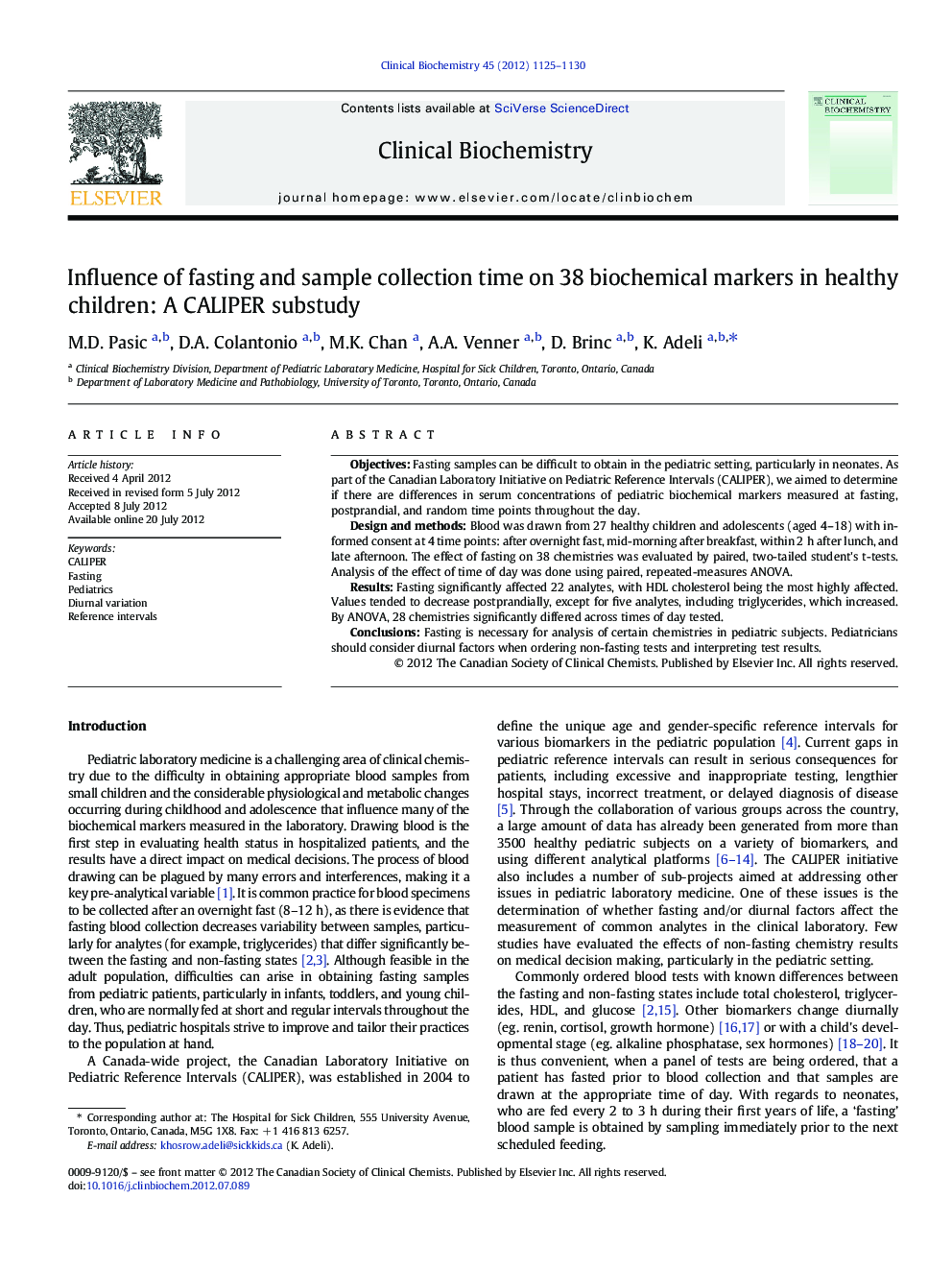| Article ID | Journal | Published Year | Pages | File Type |
|---|---|---|---|---|
| 1968861 | Clinical Biochemistry | 2012 | 6 Pages |
ObjectivesFasting samples can be difficult to obtain in the pediatric setting, particularly in neonates. As part of the Canadian Laboratory Initiative on Pediatric Reference Intervals (CALIPER), we aimed to determine if there are differences in serum concentrations of pediatric biochemical markers measured at fasting, postprandial, and random time points throughout the day.Design and methodsBlood was drawn from 27 healthy children and adolescents (aged 4–18) with informed consent at 4 time points: after overnight fast, mid-morning after breakfast, within 2 h after lunch, and late afternoon. The effect of fasting on 38 chemistries was evaluated by paired, two-tailed student's t-tests. Analysis of the effect of time of day was done using paired, repeated-measures ANOVA.ResultsFasting significantly affected 22 analytes, with HDL cholesterol being the most highly affected. Values tended to decrease postprandially, except for five analytes, including triglycerides, which increased. By ANOVA, 28 chemistries significantly differed across times of day tested.ConclusionsFasting is necessary for analysis of certain chemistries in pediatric subjects. Pediatricians should consider diurnal factors when ordering non-fasting tests and interpreting test results.
► Blood from healthy children was analyzed at 4 different time points in a day. ► We investigated fasting and diurnal variations in 38 common biochemical markers. ► 22 markers changed significantly after eating, especially triglycerides. ► 28 markers varied significantly depending on the time of day blood was drawn. ► Pediatricians should consider diurnal factors when interpreting non-fasting results.
